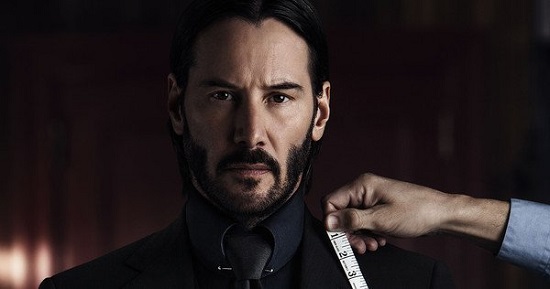It’s easy to dismiss John Wick: Chapter 2 as just a film about a monosyllabic, impassive hit-man shooting, stabbing and punching an interminable supply of henchmen. And in a lot of ways, the sequel, much like the first film, is just two hours of Keanu Reeves using bullets to trepan bad guys. However, there is depth to every hollow-pointed bullet. Underneath the facade of a primitive shoot-em-up is an intelligent, confident story about one man’s quest for vengeance and a rare example of a sequel being better than its predecessor.
Just as the first film – beneath the buckets of spilt blood and hailstorm of bullets – was about the intimate nature of revenge, Chapter 2 is very much about its fatal, public consequences. By returning to the criminal world, John activates a serious debt he owes to Santino D’Antonio (Riccardo Scamarcio), an Italian crime lord who helped John with the “impossible task” alluded to in the first film. To settle the debt John has to carry out a very high-profile assassination that will put his life in danger and make it even harder for him to retire – again.
There is a strong sense of thoughtful escalation in the sequel. Where the first film started with a car gently bumping against a wall, Chapter 2 starts with a deafening car chase and doesn’t ease up. John gets shot, stabbed, thrown through windows and out of cars – and that’s only in the opening five minutes. It’s even more apparent than in the first film that this is a world in which every action has a disproportionate reaction. And just as the action scales-up so does the world it takes place in. What made the first film so enjoyable was the speed and ease with which it constructed a complete underworld with its own laws, currency and distinctive characters, and Chapter 2 is just as successful at expanding it. Rome, where half of the action takes place, has its own Continental hotel with its own charismatic owner, Julius, and a delightfully dry gun sommelier (Peter Serafinowicz). Each character, no matter how fleeting their appearance, will leave an impression. Even a nameless, silent giant of an assassin leaves a humorous mark simply by forcing a surprised John to expend more effort than normal to kill him.
Character intentions and emotions fly around just as fast as the bullets in this world. In fact Derek Kolstad and Chad Stahelski, writer and director of the films respectively, don’t find the bullets half as interesting as why they were fired in the first place. The fact that assassins Cassian (Common) and Ares (Ruby Rose) are chasing John is not as interesting as the fact that we understand they will not stop until John is dead. They won’t stop hunting just as John didn’t stop hunting Iosef in the first film; just as Viggo didn’t stop protecting Iosef.
These dynamics and vengeful, internecine cycles give serious weight to the mindless fun of the film. It may not be as much of a stretch as it sounds to say that it feels like a Jacobean revenge tragedy. In fact, it’s almost certainly intentional. Where John Wick was populated by eastern European criminals, Chapter 2 introduces Italian royalty: kings, princes, princesses and lords at High Tables, all with their own Machiavellian motives. Regicidal and sororicidal plots fill the air as if it were The Duchess Of Malfi. The Continental New York is now less a hotel and more a duchy; a royal court with spies and assassins on every corner; waiting, watching, reporting. Their names read like characters out of a Jacobean play: Ares, Cassian, Julius, Aurelio.
Just as the characters appear to be elevated in name, motive and nobility in Chapter 2, so is the humour. It’s drier, more self-deprecating than in the first film. Many jokes come from the increasing insanity of the gun-fights. In keeping with the idea of public consequences, a lot of the action takes place in increasingly public places, including a particularly outrageous silencer gun-fight on the New York underground, where the joke is that the passers-by are clearly aware of the murderous chaos happening around them, they just don’t want to be inconvenienced on their daily commute. This awareness and acceptance of just how ridiculous it is is what makes John Wick: Chapter 2 so enjoyable. In one shoot-out scene, John finds himself murdering at least 20 henchmen at an exhibition entitled ‘Reflections Of The Soul’. It’s a wonderfully absurd joke that shows a growing maturity is accompanying a growing world. Bring on Chapter 3.


